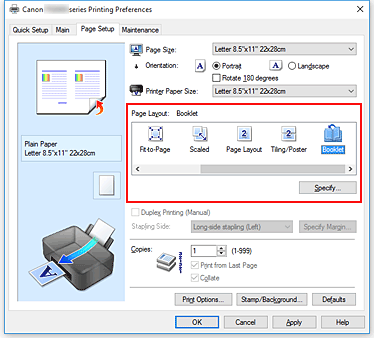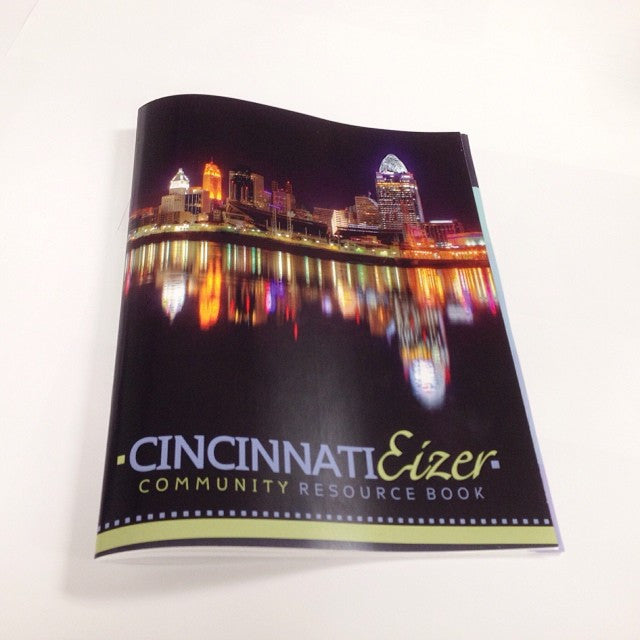10 Innovative Ways Booklet Printing Is Revolutionizing Promotional Campaigns
10 Innovative Ways Booklet Printing Is Revolutionizing Promotional Campaigns
Blog Article
The Crucial Guide to Recognizing Brochure Printing Options and Techniques
The process of booklet printing involves several factors to consider that can considerably impact the end product. From choosing the suitable layout and size to understanding the subtleties of binding methods, each selection plays a crucial duty. In addition, aspects such as paper stock and printing strategies more influence the efficiency of the pamphlet. As one browses these alternatives, it becomes critical to realize just how they adjoin and what that implies for the total result.
Comprehending Brochure Layouts and Dimensions
When thinking about brochure printing, comprehending the numerous styles and dimensions readily available is crucial for accomplishing the desired presentation. Pamphlets can be created in many styles, consisting of saddle-stitched, spiral-bound, and perfect-bound, each offering distinctive advantages. Typical sizes vary from basic letter (8.5 x 11 inches) to smaller sized options like A5 (5.8 x 8.3 inches), permitting adaptability based upon content and target audience.Selecting the ideal dimension can affect both the layout and viewers involvement. Bigger sizes may suit visually driven material, while smaller layouts might be extra portable and easy to use. Additionally, the number of web pages affects the selection of binding technique, as thicker brochures may call for stronger bindings. Inevitably, recognizing these facets enables for an extra customized strategy, ensuring that the last item lines up with the designated message and aesthetic, boosting the total efficiency of the communication.
Selecting the Right Paper Stock

Binding Methods: Options and Considerations
When it involves binding techniques for pamphlets, a number of options are readily available, each with distinctive benefits. Saddle stitch binding provides an economical option for thinner booklets, while perfect binding strategies offer an even more polished search for thicker publications. Wire-O binding stands out for its longevity and ease of use, making it perfect for documents that call for adaptability.
Saddle Stitch Binding
Saddle stitch binding uses a useful and cost-effective option for setting up pamphlets, making it a popular option amongst authors and businesses. This binding method entails folding sheets of paper in half and stapling them along the fold line, creating a organized and neat appearance. Normally appropriate for brochures with a lower page matter, saddle stitching is optimal for publications, brochures, and training materials. The simpleness of this technique permits quick production and is frequently favored for marketing things or short runs. It is vital to note that saddle stitch binding might not be appropriate for thicker pamphlets, as the back might not hold up under raised weight. In general, it remains a reputable alternative for several printing projects.
Perfect Binding Methods
Perfect binding is a widely used method that gives a specialist and refined surface to pamphlets and publications. This technique entails gluing the pages together at the spinal column using a solid adhesive, enabling for a clean edge and the capacity to hold a larger variety of pages compared to saddle sewing. Perfect binding is especially appropriate for thicker pamphlets, such as brochures and annual records, where a sturdy, flat back is preferred. Additionally, it uses the alternative for a published cover that can be developed to boost aesthetic allure. Considerations such as page count, paper weight, and the intended use of the brochure should be taken right into account, as they can influence toughness and general high quality.
Wire-O Binding Alternatives
Wire-O binding, known for its resilience and flexibility, supplies an excellent choice for brochures that need simple web page transforming and a specialist appearance. This binding method employs a collection of steel loops that hold pages firmly, permitting them to exist level when open. It is especially suitable for handbooks, brochures, and presentations as a result of its durable nature. Wire-O binding is available in different shades and sizes, fitting various page matters and thicknesses. Furthermore, it allows the inclusion of covers and tabs, enhancing the booklet's total visual. Factors to consider for Wire-O binding include the choice of wire color, the dimension of the loopholes, and the degree of modification desired, every one of which can profoundly influence the last item's appearance and performance.
Digital vs. Offset Printing: Which Is Best for You?
When choosing a printing technique for brochures, recognizing the differences between digital and balance out printing is vital. Digital printing makes use of modern innovation to produce premium prints swiftly and cost effectively, making it suitable for short runs or tasks needing fast turnaround times. It permits modification, offering the capacity to publish on-demand with marginal waste.In contrast, offset printing is a traditional technique that succeeds in producing large amounts with constant top quality. It includes moving ink from a plate to a rubber covering, after that to the paper, which leads to specific details and vibrant colors. However, offset printing normally requires longer setup times and is more cost-efficient for bigger volumes.Ultimately, the choice between digital and offset printing relies on project needs, spending plan, and preferred quantity. For little, time-sensitive tasks, digital may be the most effective selection, while countered might be preferable for larger, premium manufacturings.

Creating Your Booklet: Tips and Best Practices
When designing a brochure, cautious attention to format, typeface choice, and color usage can greatly boost its performance. A well-structured layout overviews the reader's eye, while suitable fonts assure readability and share the preferred tone. In addition, reliable use of shade can stimulate feelings and highlight crucial info, making the general design extra impactful.
Selecting the Right Format
Exactly how can one successfully choose the appropriate design for a booklet? It is necessary to assess the pamphlet's objective and target audience. A tidy, arranged format improves readability and involvement. Using a grid system can help in aligning components constantly, developing a professional appearance. Furthermore, integrating visual pecking order through differing dimensions and positionings of images and message can guide the viewers's eye and highlight key info. It is likewise crucial to leave adequate white room, which avoids congestion and enables far better focus. Finally, evaluating different designs with mock-ups can supply understanding into just how the style performs in real-world situations, making certain that the last product satisfies both functional and aesthetic demands.
Picking Proper Font Styles
A well-chosen typeface can significantly improve the total layout of a brochure, matching the design and enhancing the content's message. The option of fonts should take into consideration readability, specifically for body message, as it ensures the info is accessible to all visitors. Sans-serif fonts are usually preferred for digital layouts, while serif font styles can offer a conventional feel in printed materials. It's suggested to limit font selections to two or three to maintain visual coherence. helpful site In addition, typeface size plays a vital duty; headings ought to be not overwhelming however distinct, while body text should be comfy for reading. When selecting font styles, positioning with the booklet's theme and target market is important for reliable interaction and aesthetic allure.
Effective Use of Shade
Color functions as a powerful device in pamphlet layout, forming assumptions and guiding reader feelings. It can evoke sensations of excitement, depend on, or peace, depending on the tones selected. Developers must take into consideration color concept principles, making sure that the picked scheme lines up with the booklet's message and target audience. Utilizing warm shades like red and orange can develop necessity, while cooler tones like eco-friendly and blue foster tranquility.Additionally, comparison plays a vital function; corresponding colors can enhance readability and visual allure. Uniformity in shade use throughout web pages better strengthens brand name identity and cohesion. Eventually, reliable color application not just captures interest yet likewise reinforces the pamphlet's function, making it a crucial element of successful design.
Completing Touches: Coatings and Special Impacts
While several take into consideration the web content and layout of a brochure one of the most vital components, the completing touches, such as layers and unique impacts, play a vital function in enhancing its total allure. Coatings can supply defense and longevity, ensuring important source that the brochure withstands damage. Matte finishes supply an advanced, non-reflective surface, while shiny layers can make shades show up even more vivid and eye-catching. Special results, like embossing or foil marking, add a responsive measurement that can produce a remarkable impact. These strategies can highlight specific areas, attracting interest to vital information or developing aesthetic passion. Furthermore, UV coating can offer a high-shine coating that boosts the overall look.Together, these finishing touches not only improve the brochure's aesthetic yet also communicate professionalism and attention to detail, ultimately leaving a long lasting impact on the visitor.
Expense Factors To Consider for Brochure Printing
Comprehending the various cost factors to consider for brochure printing is essential for companies and companies intending to maximize their budgets. Trick variables influencing expenses consist of the choice of paper, ink, and binding techniques. Greater top quality materials, such as superior paper or specialized inks, commonly enhance the general expense. Furthermore, the size and web page count of the pamphlet play a significant function; larger pamphlets need even more resources and time to produce.Another important consideration is the printing method, whether electronic or balanced out, as each has its own pricing framework and suitability for various quantities. Organizations must likewise factor in design prices, which can differ based upon intricacy and the usage of professional solutions. Eventually, shipping and handling fees can add to the total, particularly for large orders. By assessing these aspects, organizations can make informed decisions that align with their economic capacities while attaining the desired high quality in their published products.
Often Asked Concerns
What Are the Ecological Effects of Pamphlet Printing?
The environmental effects of booklet printing consist of deforestation from paper manufacturing, carbon emissions from transport, and waste generation from disposed of materials - Booklet Printing. Sustainable methods, such as making use of recycled paper and green inks, can minimize these results
Just How Can I Make Sure Color Accuracy in My Pamphlet?
To ensure shade precision in a booklet, one must make use of adjusted monitors, useful link employ specialist color profiles, carry out test prints, and select premium printing services that supply color matching and proofing choices for finest outcomes.
What Is the Regular Turnaround Time for Pamphlet Printing?
The typical turn-around time for booklet printing varies depending on the intricacy and quantity - Booklet Printing. Usually, it varies from a few days to two weeks, influenced by factors such as printing methods and completing requirements
Exist Minimum Order Quantities for Brochure Printing?

Can I Publish Pamphlets in Several Languages?
Printing brochures in numerous languages is possible. Numerous printing services offer alternatives for multilingual or multilingual designs, enabling for reliable communication. Cautious preparation assurances that develop elements accommodate numerous languages without endangering readability or aesthetics. Furthermore, elements such as paper supply and printing techniques further affect the efficiency of the pamphlet. When taking into consideration pamphlet printing, comprehending the numerous formats and dimensions available is vital for accomplishing the wanted discussion. When picking a printing technique for booklets, comprehending the differences in between digital and counter printing is important. Furthermore, the dimension and page matter of the brochure play a significant function; bigger brochures need even more resources and time to produce.Another essential factor to consider is the printing technique, whether digital or balanced out, as each has its very own pricing framework and suitability for various amounts. The ecological effects of booklet printing include deforestation from paper manufacturing, carbon emissions from transportation, and waste generation from discarded products.
Report this page